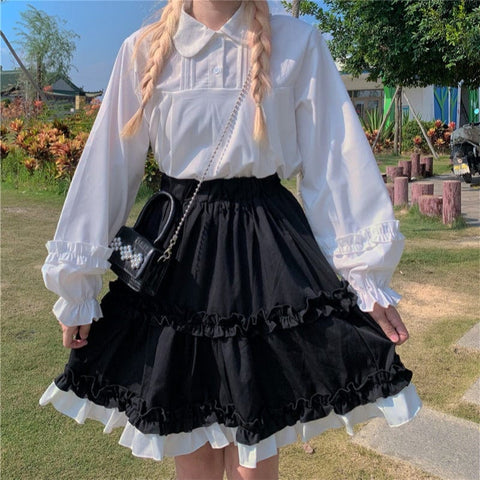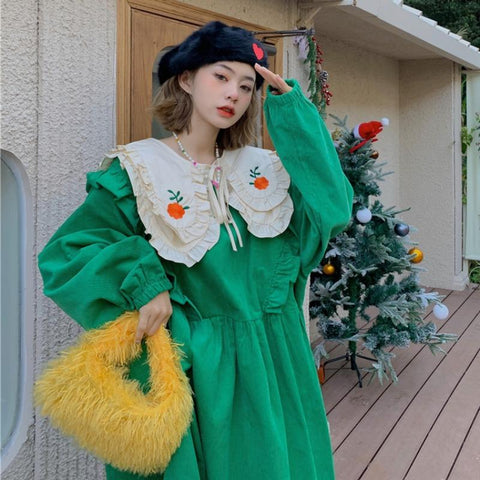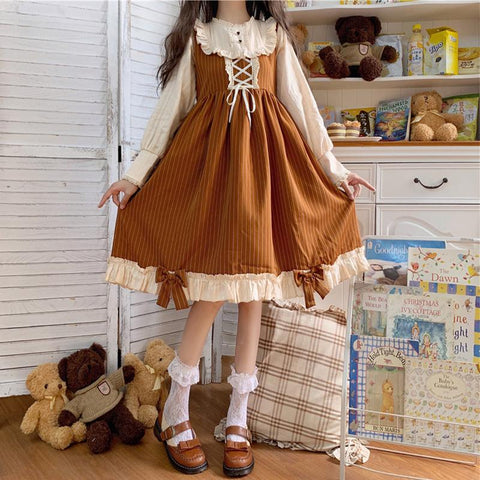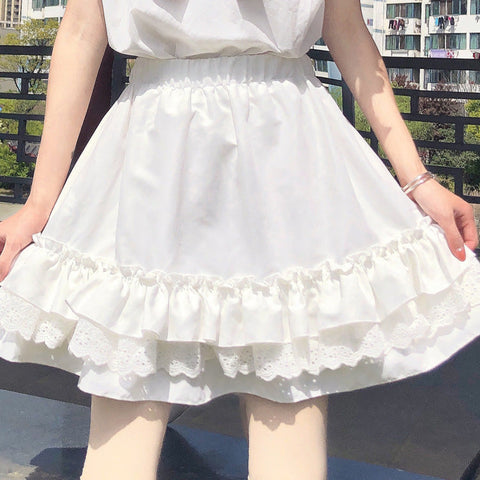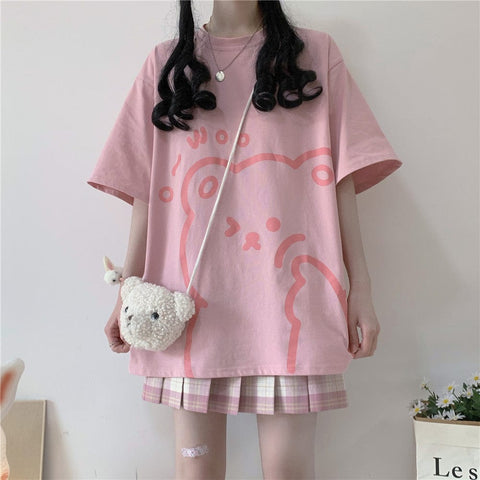What is Harajuku Style?
Harajuku style is a fashion style unlike any other that has taken root and flourished, capturing the imagination of style enthusiasts and trendsetters from around the world. Harajuku style has not only redefined fashion but has also become a cultural movement that celebrates individuality, creativity, and the boundless possibilities of self-expression. In this blog series, we will delve deeper into the kaleidoscopic world of Harajuku style, exploring its various substyles, the cultural influences that have shaped it, and the impact it has had on mainstream fashion.
What is the history of Harajuku Style?
Harajuku culture and fashion are deeply rooted in the evolution of Japanese fashion, Japan's post-war society, and its subsequent embrace of youth rebellion, creativity, and individuality. Here's a closer look at the key milestones that have shaped the phenomenon:
Post-War Influence and Westernization:
After World War II, Japan underwent a period of rapid economic growth and Westernization. This era marked the beginning of a shift in societal norms, and the Japanese young people sought to express themselves in ways that challenged traditional Japanese fashion and strict societal rules. This desire for self-expression laid the foundation for the emergence of Harajuku as a cultural hotspot.
1960s-1970s: The Birth of Harajuku Fashion:
During the 1960s and 1970s, Harajuku began to gain recognition as a center for counterculture and artistic expression. Young people flocked to the district to engage in artistic pursuits, leading to the establishment of galleries, music venues, and alternative fashion outlets. This period saw the rise of "hippie" and bohemian styles, as well as the incorporation of vintage and second-hand clothing.
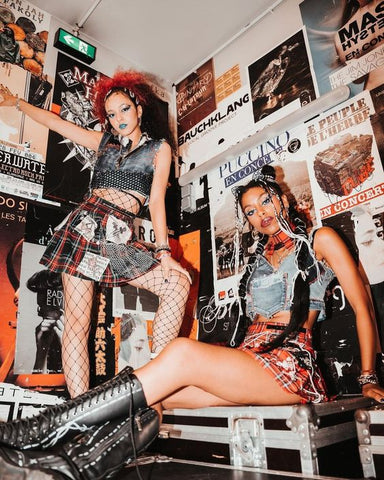
1980s: The Birth of Street Fashion:
The 1980s marked a turning point for the Harajuku style, as the district gained international attention for its unique street styles. The term "Harajuku Style" was coined to describe the eclectic mix of fashion trends, and the district became a magnet for photographers, designers, and trendsetters. The era saw the emergence of creative subcultures like the "Visual Kei", and "Ganguro Style" movement, characterized by dramatic makeup, flamboyant hairstyles, and extravagant outfits.
1990s: Influence of Pop Culture and Media:
The 1990s saw Harajuku fashion further influenced by pop culture, including anime, manga, and music. This period gave rise to substyles like Kawaii culture which celebrated cuteness and childlike innocence. The increased exposure of Harajuku style through magazines, TV shows, and the internet contributed to its global recognition and influence.
2000s-Present: Continual Evolution and Global Impact:
In the 2000s and beyond, Harajuku fashion continued to evolve and diversify. While maintaining its roots in rebellion and self-expression, it also incorporated contemporary influences, including streetwear and international fashion trends. Social media platforms played a significant role in spreading Harajuku to a global audience, inspiring fashion enthusiasts around the world.

Key Elements of Harajuku Style
The Harajuku is a vibrant and eclectic fashion subculture that originated in the Harajuku district of Tokyo, Japan. It's characterized by its unique blend of individuality, creativity, and a fearless approach to fashion. This distinctive style incorporates several key elements that set it apart from mainstream fashion:
Street Fashion as Self-Expression
At the heart of Harajuku's fashion style is the idea of using fashion as a means of self-expression. Individuals who embrace this style often view their outfits as a canvas to convey their personalities, interests, and emotions. Harajuku enthusiasts are unafraid to experiment with various looks like colorful outfits and unusual hairstyles, embracing a sense of freedom that goes beyond conventional fashion norms.
Mixing and Matching Different Styles
One of the hallmarks of Harajuku fashion is the art of mixing and matching different styles, subcultures, and aesthetics. Fashionistas draws inspiration from a wide range of sources, including anime, punk, goth, sweet lolita, vintage, kawaii (cute), and more. These combinations create visually striking and colorful clothes that challenge traditional Japanese attire boundaries.
Playful Use of Colors and Patterns
Harajuku style is known for its fearless use of colors, patterns, and accessories. Outlandish fashion often features bright, bold colors that catch the eye and reflect the wearer's exuberance. Mixing patterns such as plaids, floral prints, and stripes is common, contributing to the playful and eclectic nature of the look. Accessories, such as oversized bows, hair clips, layered jewelry, and designer bags, add a finishing touch to complete the ensemble.
Incorporation of Traditional Japanese Elements with Modern Fashion
Harajuku fashion frequently blends traditional Japanese fashion elements with contemporary fashion trends. This fusion of old and new results in unique outfits that pay homage to Japan's cultural heritage while embracing modern influences. Elements like kimono-inspired silhouettes, obi belts, and traditional motifs are often reimagined in unconventional ways.
What are the Different Styles of Harajuku Style?
In the labyrinthine world of Harajuku styles, the substyles like mori kei style, gyaru style, and ganguro style shine as testaments to personal expression, allowing fashion enthusiasts to create ensembles that mirror their inner worlds. Whether you're entranced by the ethereal charm of sweet Lolita, captivated by the juxtaposition of darkness and pastels in Pastel Goth, or eager to embrace the playfully chaotic Decora style, Harajuku substyles have an enchanting story to tell through clothing and cute accessories.
Kawaii (Cute) Style
The Kawaii, or cute, style of clothing is a cultural phenomenon that originated in Japan and has captured the hearts of people around the world. Known for its emphasis on playfulness, innocence, and childlike charm, Kawaii fashion is a vibrant and unique expression of self. This style revolves around clothing and accessories that incorporate adorable and whimsical elements, often featuring pastel colors, oversized bows, cartoon characters, and creative patterns.
Imagine stepping into a candy-colored dream world where everything is infused with an air of innocence and delight. Kawaii style is a celebration of all things cute, and its wardrobe is a treasure trove of pastel hues, frilly dresses, denim flared pants and oversized accessories. Dresses adorned with bows, heart-shaped purses, and cartoon-character socks are staples of Kawaii fashion. The signature "Cute" look also often finds a home within this substyle, with its prince pants and lace-trimmed blouses. And let's not forget the headbands crowned with plush animal ears or oversized bows that top off these whimsical ensembles.
Lolita Style
Lolita style, a unique and enchanting fashion subculture, revolves around a whimsical blend of Victorian and Rococo influences, creating a world of charm and elegance. This fashion movement, named after Vladimir Nabokov's novel "Lolita," redefines conventional clothing norms with its intricate attention to detail and playful, doll-like aesthetic.
At its core, the sweet Lolita style emphasizes modesty, emphasizing high-necked blouses, voluminous knee-length skirts, and elaborate dresses adorned with cream lace, ruffles, and bows. Pastel color palettes dominate the landscape, evoking a sense of innocence and nostalgia. Accessories play a vital role, with knee-high socks, dainty headpieces, and delicate parasols completing the signature look.
Fairy Kei style
Fairy Kei style draws inspiration from the pastel-colored dreams of childhood, creating a kaleidoscope of clothing that resembles something straight out of a fairy tale. The keyword that encapsulates kei fashion is "pastel." Soft and sugary hues dominate the palette, with shades like light pink, mint green, lavender, and baby blue taking center stage.
Fairy Kei outfits frequently feature layers upon layers of clothing, incorporating elements like petticoats, ruffled skirts, and lace-trimmed socks to add dimension and texture. Accessories play a pivotal role, with chunky plastic jewelry, colorful hair clips, and whimsical bags serving as the finishing touches. Whether it's adorned with characters from beloved cartoons or sprinkled with sparkling gems, Fairy Kei clothing exudes an irresistible charm to catch Japanese girls.
SK17113
Decora Style
The Decora style, rooted in Japanese street fashion, is a vibrant and expressive clothing trend that has captivated the fashion scene with its unique and playful aesthetics. Characterized by its bold and eclectic mix of colors, patterns, and accessories, Decora's style encourages self-expression through clothing like no other.
For those who believe that more is indeed more, the Decora style is a carnival of colors, patterns, and accessories that delight the senses. At its core, Decora fashion is about layering, layering, and then layering some more. Brightly colored t-shirts are worn under bold patterned dresses or skirts, and leggings are adorned with vibrant knee-high socks. But it's the accessories that truly steal the show – think plastic toys, buttons, badges, and charms pinned to clothing, multicolored hairpins, and an assortment of bracelets that cover wrists in a riot of hues.
Harajuku Fashion Today
Harajuku, a district known for its unique clothing styles, has evolved into a dynamic hub of creativity and self-expression. Today, Harajuku fashion continues to thrive, adapting to the digital age and leaving a global impact.
Evolution and Adaptation in the Digital Age
Harajuku style has always been characterized by its fearless embrace of individuality and the unexpected. From its origins in the 1970s as a space for rebellious expression, Harajuku fashion has constantly evolved, taking inspiration from various subcultures, anime, music, and street art. What's remarkable is how this vibrant scene has managed to stay relevant in the digital age.
In a world dominated by social media and instant communication, Harajuku fashion has found new life online. Influencers and fashion enthusiasts around the world showcase their interpretations of Harajuku style on platforms like Instagram, TikTok, and YouTube. The digital landscape has enabled Harajuku to transcend geographical boundaries, inspiring countless individuals to experiment with their looks and infuse personal narratives into their fashion choices.
Global Impact and Fusion with Other Fashion Trends
One of the most intriguing aspects of modern Harajuku fashion is its ability to seamlessly fuse with other global fashion trends. This cross-cultural pollination has resulted in unique, hybrid styles that captivate fashion enthusiasts worldwide. From Gothic Lolita to dolly Kei fashion, and from Visual Kei to Kawaii, Harajuku fashion has inspired designers and trendsetters around the globe.
Harajuku's influence on the international fashion scene is undeniable. Western designers often incorporate elements of the Harajuku style into their collections, bringing a touch of the district's playful and avant-garde spirit to runways in Paris, New York, and Milan. The intersection of Harajuku fashion with other styles creates a visual language that transcends cultural boundaries, illustrating how fashion can be a universal means of communication.
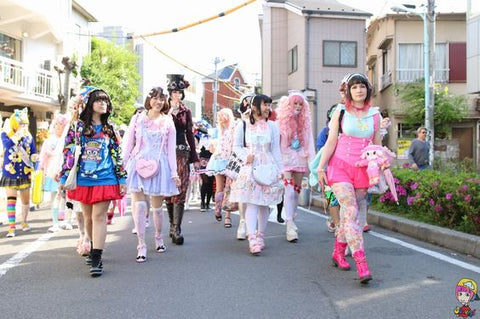
Misconceptions and Cultural Appropriation of Harajuku Style
In the kaleidoscope of global fashion, Harajuku fashion is iconic and instantly recognizable. With its vibrant colors, eclectic combinations, and boundless creativity, Harajuku's style has captured the fascination of fashion enthusiasts around the world. However, like any cultural phenomenon, it's not immune to misconceptions and the potential for cultural appropriation. We need to avoid missteps that can perpetuate stereotypes and cultural insensitivity.
Addressing Misunderstandings about Harajuku Style
Harajuku style is often perceived as a monolithic trend, but it's far from it. The term encompasses a multitude of substyles that vary in aesthetics and influences. From Gothic Lolita and Decora to Visual Kei and Gyaru, each substyle has its unique characteristics and history. It's important to recognize this diversity and avoid generalizations that oversimplify the complexity of Harajuku fashion.
Furthermore, the misconception that the Harajuku style is solely about costumes and extravagant outfits disregards its deeper significance. For many individuals, Harajuku fashion is a means of self-expression, a way to challenge societal norms, and a form of art that goes beyond appearances.
Understanding the Cultural Context Behind Fashion Choices
Every fashion choice carries meaning, and Harajuku style is no exception. To truly appreciate and engage with this fashion movement, it's vital to understand the cultural context that has shaped it. Harajuku fashion is deeply intertwined with Japanese history, pop culture, and societal norms. By educating ourselves about its origins, we can better appreciate the artistry and significance of each substyle.
Understanding the struggles, triumphs, and evolution of Harajuku fashion also enables us to be more respectful and considerate in our engagement with it. This knowledge empowers us to celebrate the Harajuku style in a way that acknowledges its cultural importance and the people who have contributed to its development.
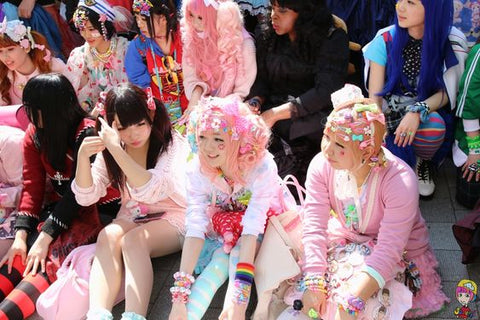
From the playful Lolita dresses that transport us to a whimsical world to the bold and daring streetwear that challenges conventions, Harajuku style is a celebration of personal identity, pushing boundaries and embracing the extraordinary.
For those looking to dive into the world of Harajuku fashion, our store offers a gateway to this exciting style. With a wide range of Harajuku clothing, accessories, and inspirations, you can embark on your fashion journey. So, whether you're drawn to the whimsical allure of Lolita fashion or the bold and daring statements of Visual Kei, there's something for every fashion enthusiast at Kawaii Fashion.
